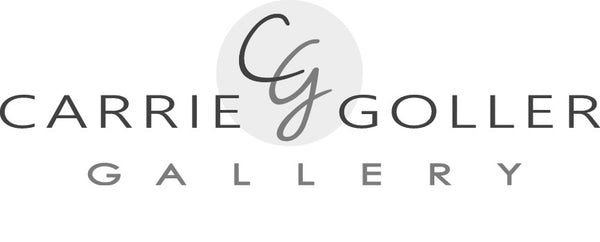What is "Encaustic"?
At Carrie Goller Gallery, you may find the word "encaustic" used to describe the process for a number of paintings. You may also see "encaustic" process applied to certain reproduction artworks or gift products. What does "encaustic" mean exactly?
Encaustic is the very earliest known form of paint, first used by the Greeks over 2000 years ago. The amazing Fayum Mummy Portraits were painted in encaustic by the Greeks in Egypt. They are still fresh and vibrant, and are exhibited today in the world's greatest galleries.
Encaustic painting involves melting, applying, then heat fusing layers of beeswax (resin and pigment can be added). The wax gives an optical depth unique to the medium.
Encaustic has returned from obscurity as modern tools have made the process more practical. Diego Rivera used encaustic in the 1930's on his murals. Jasper Johns is credited with the current renaissance of encaustic fine art with his work that began in the 1950's.
"Why paint in a process-intensive medium that's over 2000 years old?" is rarely asked. That answer is a given: luminosity, rich surface, the beauty of the wax.
Artist Carrie Goller is adept at working with the encaustic medium, interpreting this ancient root into very contemporary work, creating paintings with brilliant luminosity, as well as some with a rich, delicate opalescence. Maintaining their freshness and intensity, they will not darken or yellow. Because of the protective nature of wax they are impervious to moisture and need not be varnished or put under glass.
